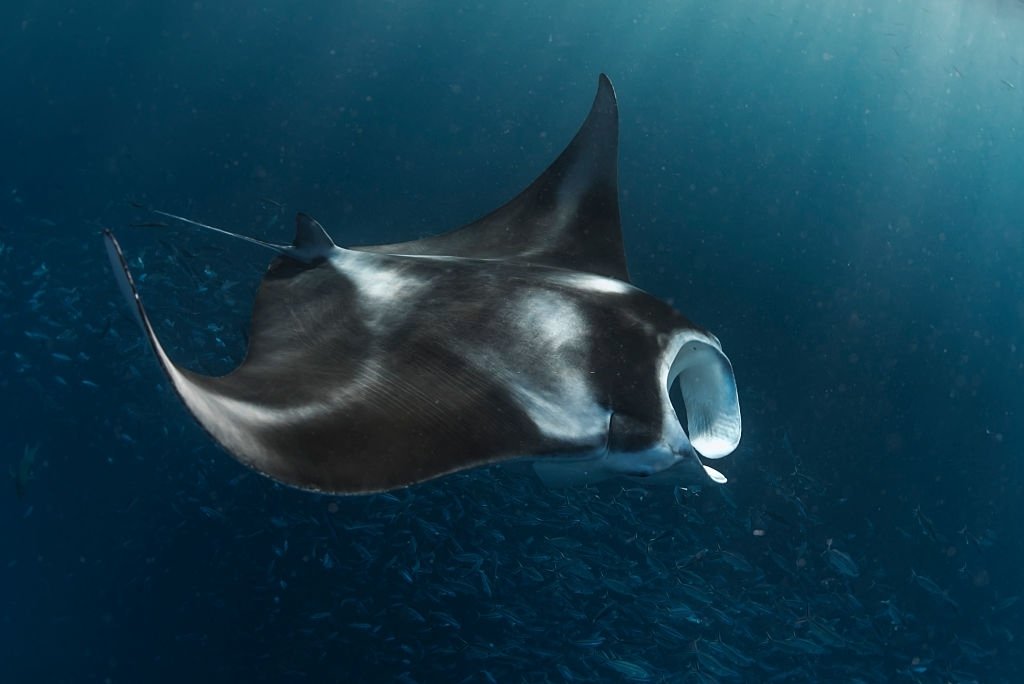Like all other great ocean creatures, manta rays do have countershading colouration – bright red on the undersides and pale yellowish or white on their bellies. Like all other Great Ocean creatures, manta rays also have a dorsal fin (or ‘lance’) and lateral line – a series of narrow lines along the body that helps the fish regulate its head movement. Manta rays are very distant looking fishes, with a headlamp often used to look at them during the day. On the other hand, they can move fast and quickly when needed.

Manta rays have no vocal cords, and don’t have gills, like most sharks. They rely on their acute sense of smell to detect food and predators. Manta rays also use their highly sensitive tongue for grooming, although not to the same extent as dogs and cats. Cartilaginous fish don’t have gills, so their tongues are used to detect other things such as food and potential predators. Manta rays use their eyesight more than any other organ in their body to hunt prey. As they move quickly, they must be able to see quickly to chase their prey.
Manta Rays has evolved into a very efficient predator in large bodies of water, where their body size is their biggest advantage over smaller fish. They are ambush predators, waiting for their prey long before they strike. They have powerful sonar sense, which allows them to detect motion at a distance. The manta ray has evolved into a very effective swimmer, being able to stay afloat for extended periods.
Manta Rays can live for more than half a year without eating. One manta ray in captivity can live up to two years. This makes these wonderful pets that are easy to care for. However, these animals have some specific dietary requirements, so you should contact your local aquarium dealer to find out what those are.
Manta Rays are carnivores, but they enjoy feeding on small fish, like guppies and goldfish. However, they can also be found eating crayfish, shrimp, crustaceans, frogs, and birds. They prefer to eat meat, although they are fine eating plant material like algae, leaf litter, and insects. In captivity, most species will accept flake tropical fish food, algae flakes, or brine shrimp pellets. Manta rays will also accept corals, sponges, and other cartilaginous fish.
Manta Rays is large fish, reaching thirty or forty inches in length. Their slender bodies are actually quite well developed, even though they have short, spindly pectoral fins. These long, spiny little arms end in four digits, which are nearly as long as the ray’s body. The Manta Ray has one ventral fin and one dorsal fin.
The Manta Ray’s name comes from the Greek word for “manta”, which is a large fish. The ray also has a large, egg-laying disc, which may be violet or black with spots. It has a pointed beak, large pectoral fins, a large tail, and long, spiraling whiskers. The Manta Ray weighs between three and five pounds and is one of the largest known fish.
Although this is a beautiful fish, it is not a show stealer. Its appearance is truly a marvel, with its magnificent color, distinctive pattern, and gentle temperament. The Manta Ray is so gentle that it will even calm frightened animals such as Birds and reptiles in its care. Many scientists believe that the manta ray is one of the most beneficial creatures to nature, helping to control algae growth in areas where there is excessive growth due to overfishing, resulting in depleted oxygen levels in water and on land.








